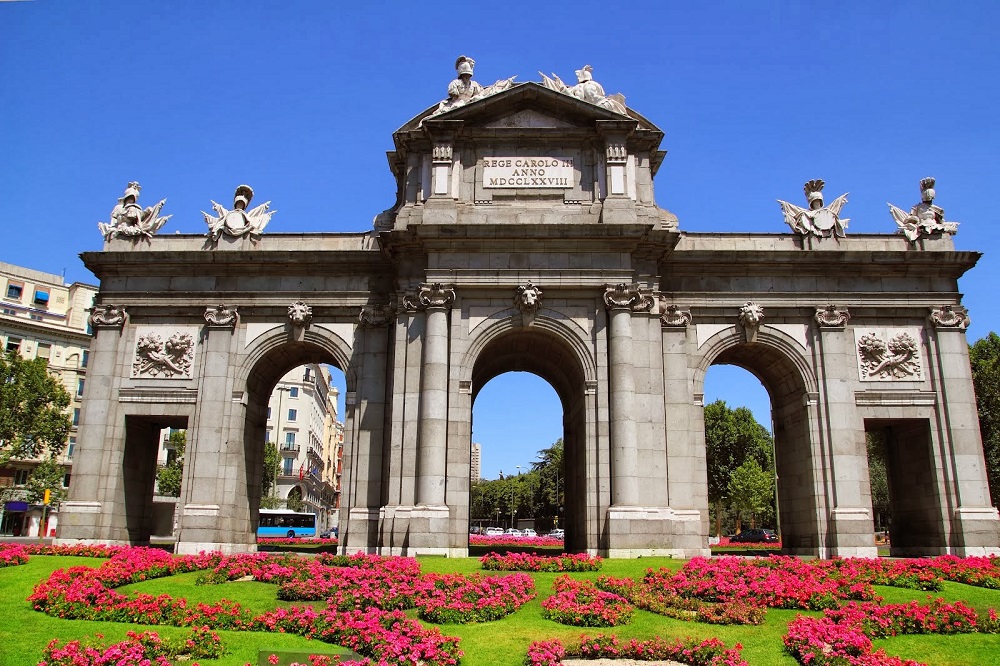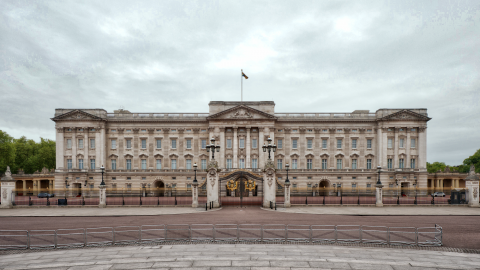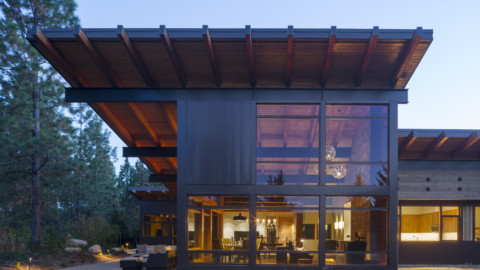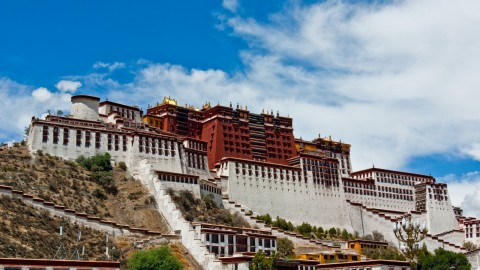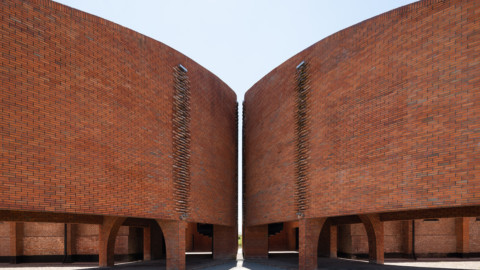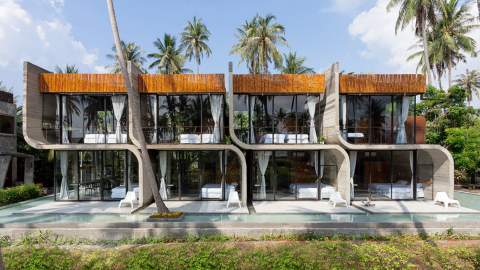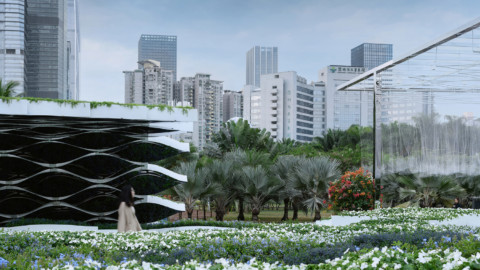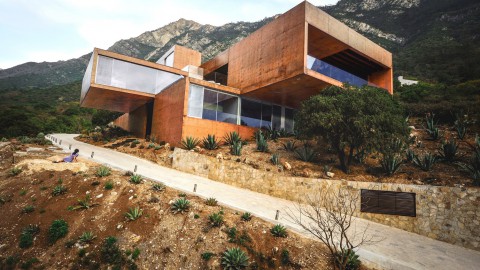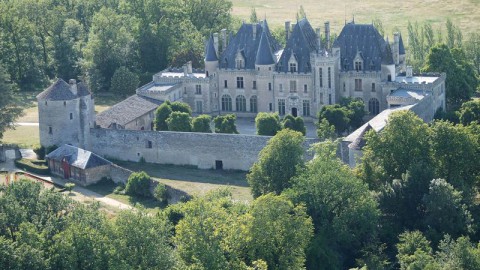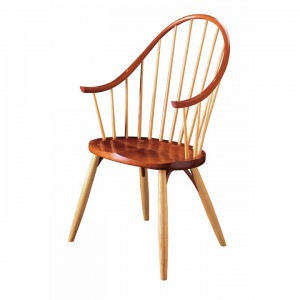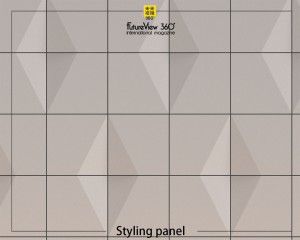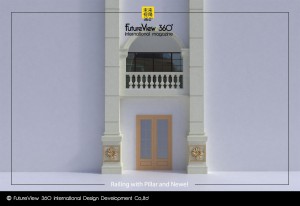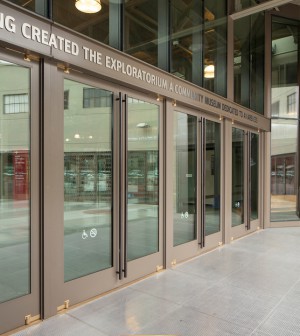Puerta de Alcalá 阿爾卡拉門

The Puerta de Alcalá is one of the five ancient royal doors that gave access to the city of Madrid (Spain).
It is located in the center of the roundabout of the Plaza de la Independencia. At the junction of the streets of Alcalá, Alfonso XII, Serrano and Salustiano Olózaga, next to the doors of the Retiro: Puerta de España, Puerta de la Independencia (main entrance to the Retiro gardens) and Puerta de Hernani.
The door gave access to those travelers who formerly entered the town from France or Aragon. At present it is a monumental gate that is located next to the Cibeles Fountain and the Retiro Park. It was built by order of Carlos III to replace another previous door that existed since the sixteenth century.The design and work belongs to the Italian architect Francesco Sabatini.Sabatini competed with other projects by Spanish architects: Ventura Rodríguez and José of Hermosilla, being finally chosen personally by the King the design of Sabatini.
It is a door of neoclassical style and monumental aspect similar to the Roman Arches of Triumph, it was erected looking at its exterior to the east in the year 1778. The door has been subsequently restored five times in more than two centuries of existence, being the last at the end of the 20th century. The originality of its factory consists in being the first triumphal arch built in Europe after the fall of the Roman Empire, being a precursor to others such as the Arc de Triomphe in Paris and the Brandenburg Gate in Berlin.
Since its inception, it has undergone various urban transformations in its environment, from being the outer border of Madrid to a compulsory tourist center that appears inserted almost in the middle of the same city. This change has been due to the widening of the 19th century along the Serrano neighborhood and the extension of Alcalá street. Finally, since 1976, it has been considered by the Spanish State as a historical-artistic monument, extending its category to the same Plaza de la Independencia.
The door and from its final location was acquiring from the late eighteenth century relevance in the people of Madrid, and at the end of the nineteenth century was one of its most characteristic icons that appears in numerous illustrations of the city. Being one of the most representative monuments, in its double condition of looking into the interior of the city and outside of it. The Puerta de Alcalá has served as a support for all kinds of political and artistic events and in its surroundings there have been numerous historical events.
阿爾卡拉門(PuertadeAlcalá)是通往馬德里市(西班牙)的五個古老皇家門之一。
它位於獨立廣場(Plaza de la Independencia)的環形交叉路口的中心。在馬德里,阿方索十二,塞拉諾和Salustiano Olozaga街道的十字路口,在雷蒂羅之門:西班牙的大門,獨立門(正門麗池花園)和普爾塔Hernani的。
門讓那些以前從法國或阿拉貢進入城鎮的遊客進入。目前,它是一個巨大的門,位於Cibeles噴泉和Retiro公園旁邊。它是由查爾斯三世為了更換存在另一個前門自十六世紀的設計作品屬於意大利建築師弗朗切斯科·薩巴蒂尼由西班牙建築師與競爭薩巴蒂尼等項目..文圖拉·羅德里格斯和何建Hermosilla,最後由國王親自選擇Sabatini的設計。
這是一個新古典門和紀念外觀類似於古羅馬凱旋門,被豎立在1778年尋求外部朝東的門,後來恢復了五次存在的兩個多世紀以來,作為最後一次是在20世紀末。其工廠的獨創性在於它是羅馬帝國淪陷後在歐洲建造的第一座凱旋門,是巴黎凱旋門和柏林勃蘭登堡門等其他建築的先驅。
自成立以來,它在環境中經歷了各種城市轉型,從馬德里的外圍邊界到幾乎插在同一城市中心的強制性旅遊中心。這種變化是由於19世紀沿著塞拉諾街區和阿爾卡拉街的延伸而擴大。最後,自1976年以來,它被西班牙國家視為歷史藝術紀念碑,將其類別擴展到同一個獨立廣場。
因為它的最終位置,從十八世紀晚期相關收購馬德里的人民和十九世紀末期的門已經它出現在城市的大量的插圖最有特色的一個圖標。作為最具代表性的紀念碑之一,在觀察城市內部和外部的雙重條件下。阿爾卡拉門(PuertadeAlcalá)是各種政治和藝術活動的支持者,周圍有許多歷史事件。
Location
Country Spain
Division: Madrid
Municipality (s): Madrid
Location: Plaza de la Independencia
General information
Owner: City Council of Madrid.
History of the building / monument
Construction: 1769-1778
Author: Francesco Sabatini
Francisco Gutiérrez Arribas
Roberto Michel
Architect (s): Francesco Sabatini
features
Type: Monumental gate
(Gateway to Madrid)
Neoclassical style (s)
Dimensions: 43,967 m (front), 21,946 m (height)
Protection of the monument
Declaration: Good of Cultural Interest.
Characteristics: Monument of the Enlightenment. Door with three arches decorated with slogans, weapons, flags and cornucopias. It has several sculptures and is topped with the Shield of Spain. First Arc of Triumph of Europe since the fall of the Roman Empire.
位置
國家:西班牙
分部:馬德里
市:馬德里
地點:獨立廣場
一般信息
所有者:馬德里市議會。
建築/紀念碑的歷史
建設:1769-1778
作者:Francesco Sabatini
FranciscoGutiérrezArribas
羅伯托米歇爾
建築師:Francesco Sabatini
功能
類型:紀念門
(通往馬德里的門戶)
新古典主義風格
尺寸:43,467米(正面),21,946米(高)
保護紀念碑
宣言:善於文化興趣。
特徵:啟蒙紀念碑。 門上有三個拱門裝飾著口號,武器,旗幟和聚寶盆。 它有幾個雕塑,並配有西班牙之盾。 自羅馬帝國滅亡以來的第一個歐洲勝利之弧。
Description
The Door was built by using two types of stone: berroqueña stone masonry for the elements of structural support and on the other hand decorative and ornamental elements were developed in white stone from the quarries of Colmenar de Oreja: angels, shields , weapons, helmets. Specifically of fossiliferous limestones of calcium carbonate characeas of 99% purity. These two constructive elements are very common in the Madrid architecture of the late eighteenth century. On the other hand the covering of the pediments consists of lead plates. The exterior facade faces to the east, while the interior faces to the west. In the intrados of the first arch the General Directorate of the Geographical Institute has placed a plaque indicating that the height above the average level of the Mediterranean in Alicante is 658.6 meters.
描述
門是用兩種類型的石頭建造的:berroqueña石砌體用於結構支撐的元素,另一方面裝飾和裝飾元素是用Colmenar de Oreja採石場的白色石頭開發的:天使,盾牌 ,武器,頭盔。 特別是含有99%純度的碳酸鈣的化石石灰岩。 這兩個建設性元素在十八世紀晚期的馬德里建築中非常普遍。 另一方面,山形牆的覆蓋物由鉛板組成。 外立面朝東,內部朝西。 在第一個拱門的內部,地理研究所總局放置了一塊牌匾,表明高於阿利坎特地中海平均水平的高度為658.6米。
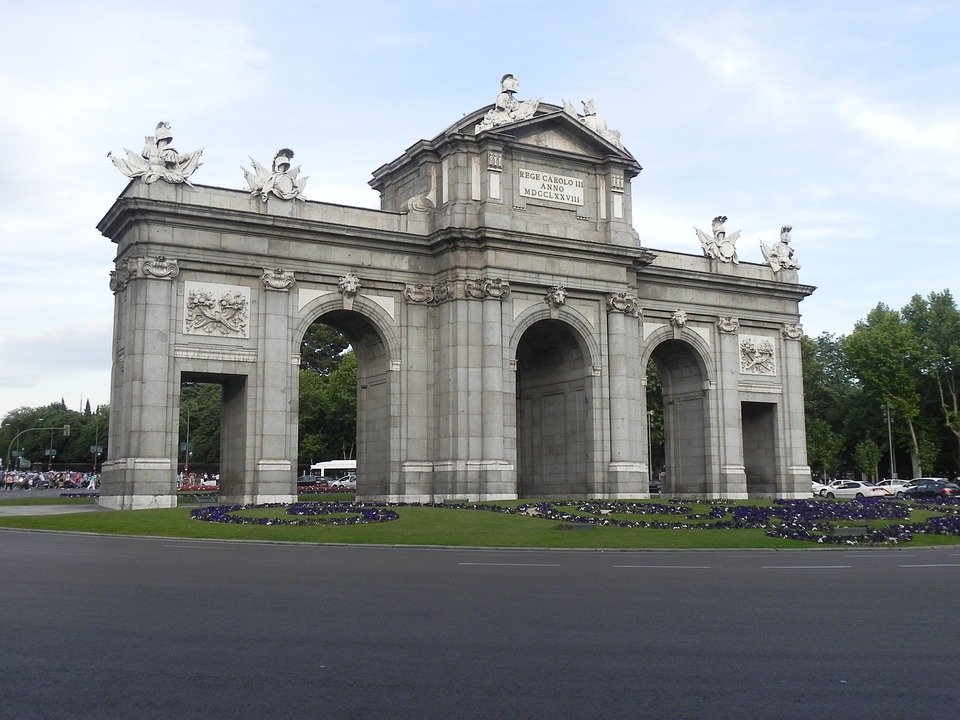
Architectural
The Puerta de Alcalá develops its architecture in three bodies, the two lateral ones at a lower height than the central one. Between its three bodies are distributed five bays in total: three with a semicircular arch, with keys finished in their voussoirs with masks with lion head shapes (west side or interior) and satyrs (east or outer side), and two sides with lintels arches decorated on them with two pairs of cards with crosses of crossed cornucopias (west or interior side) and floral patterns in the form of garlands (east or outside). These central bays already had, within a few years of their construction, bars that were closed to traffic every day at sunset.Today you can see the bushings on which this trellis was supported and turned. The other exterior openings are intended for pedestrian crossing. In plan the central body excels that of the sides.
The exterior facade, the one facing east, has ten granite columns from Segovia attached. All of them smooth and without stretch marks. In the interior, the one that looks towards the city, the six exteriors are replaced by pilasters and only two pairs next to the central arch are still columns. All of them rest on a plinth. The capitals are of Ionic order and a cornice rests on them. They are of the same design that Michelangelo did for the Capitolio factory in Rome. The models were brought in at the time to adapt them to the design of the Door.
Arquitectónica
PuertadeAlcalá在三個體中發展其建築,兩個側面的高度低於中央高度。兩側三連拱,與主要完成其voussoirs口罩的獅子頭形式(西側或內部)和山神(這或外側),並且:三個機構之間的五個開口分佈在總其上裝飾有門楣拱門,兩對卡片交叉聚寶盆(西側或內側)和花環形式(東部或外部)。這些中央海灣在建造後的幾年內就已經在日落時分每天都禁止通行。今天你可以看到這個格子被支撐和轉動的襯套。其他外部開口用於人行橫道。在計劃中,中央身體優於兩側。
外立面,朝東,有十個來自塞戈維亞的花崗岩柱。所有這些都是光滑的,沒有妊娠紋。在內部,朝向城市的那個,六個外部被壁柱替換,中央拱門旁邊只有兩對仍然是柱子。所有這些都停留在底座上。這些首都屬於離子秩序,簷口依賴於它們。它們與米開朗基羅為羅馬的Capitolio工廠所做的設計相同。這些模型是在當時引入的,以使其適應門的設計。

Decorations
The main artists of the decorations are two: the Spanish sculptor Francisco Gutiérrez (shields and angels from abroad) and the Frenchman Roberto Michel (lions, horns and other interior decorations) Michel was based in Madrid at the service of the Bourbons during of forty years and its apogee coincides with the Carolino reign. Gutierrez and Sabatini were possibly friends since their previous stay in Rome. It is about the two sculptors who worked previously in the Fuente de la Cibeles. This is perhaps the reason why these two sculptors are chosen to the detriment of Felipe de Castro who was the main sculptor of the Villa at that time. It is known that ornamentation began to be carried out in the workshops of the respective carvers in the year 1773 and that in March 1778, in spite of having finished their work, most of the ornamental pieces were not settled on the cornice of the Door .
It should be noted that some scholars of the Puerta de Alcalá mention that, contrary to what is customary in the Roman Arcos de Triunfo, as Chueca Goitia mentions, it is worth noting the absence of the bust of King Carlos III. of some remarkable fact of his reign. Either by Latin inscription or relief engraved on the granitic stone of the Door.
飾
裝飾品的主要藝人有兩個:西班牙雕塑家弗朗西斯·古鐵雷斯(從國外盾牌和天使)和法國人羅伯特·米歇爾(獅子,軍號等室內裝飾品)米歇爾在波旁王朝在附近的基於服務的馬德里。四十年和它的遠地點恰逢卡羅利諾統治時期。自從他們上次在羅馬逗留以來,古鐵雷斯和薩巴蒂尼可能是朋友。這是兩位曾在Fuente de la Cibeles工作的雕塑家。這也許就是為什麼選擇這兩位雕塑家而不利於當時別墅的主要雕塑家費利佩·德卡斯特羅的原因。據了解,紋飾開始於1773年和1778月,執行在各自的雕刻師的車間儘管已經完成了他們的工作,最具有觀賞作品是沒有解決門的窗台。
有趣的是,阿爾卡拉門的一些學者提的是,相反的是在羅馬凱旋門的習慣,為的Chueca Goitia提到包括:沒有國王卡洛斯三世的半身像。它們似乎也沒有明確提及他統治時期的一些值得注意的事實。無論是拉丁文銘文還是雕刻在門的花崗岩石上的浮雕。

On the outer inscription there is a real coat of arms held by the Fame (represented without its characteristic trumpet) and the Genius in the form of a child. The trumpet was a very common attribute in fame, an instrument with which the manificience of the King is announced. It is unknown if the trumpet of Fame was in the initial designs, or if it was simply removed later. The shield was visible, therefore to those who entered the city. The group has a similarity with the sculptural group that crowns the tomb of Fernando VI in the Real Salesas of Madrid. On the other side are represented trophies of war, being able to observe ancient weapons interspersed with modern ones. At the foot of the street you can see plumes of helmets or morriones, the banners and disordered banners that are supposed to correspond to an enemy already defeated. These allegorical representations come to indicate the absolute power of the incoming king: Carlos III.
In the interior facade, on the lateral arcs, they appear the four cardinal virtues represented in children’s bodies: Prudence, Justice, Temperance and Strength. It was believed for some time that the figures corresponded to sweeties, in part because these Cardinal Virtues had previously been represented with female figures (as can be seen in the picture of Raphael’s Virtues) .39 The children had been employed usually as decorative elements of the baroque. These allegorical representations refer to the remarkable virtues in Carlos III. All these ornamental motifs were carved in limestone from Colmenar, like cornucopias, by Francisco Gutiérrez Arribas from Ávila, and its more baroque style contrasts with the neoclassical style of the door.
在外面的銘文上,有一個真正的徽章由名人(沒有其特有的小號代表)和天才的兒童形式。小號是名聲中非常普遍的屬性,是宣傳國王的智慧的工具。目前尚不清楚Fame的小號是否在最初的設計中,或者是否稍後被移除。盾牌是可見的,因此對於那些進入城市的人來說。該團體與馬德里Real Salesas的費爾南多六世墳墓的雕塑團體有相似之處。他們代表戰爭的另一面戰利品,能夠觀察穿插著現代的古代武器。在街道的盡頭,你可以看到一連串的頭盔或者是morriones,橫幅和無序的橫幅應該與已經失敗的敵人相對應。這些寓言性的表現來表明即將到來的國王的絕對權力:卡洛斯三世。
在內部立面上,在側弧上,它們呈現出兒童身體中代表的四種主要美德:謹慎,正義,節制和力量。它被認為有一段時間了,該數字相當於puttos,一方面是因為這些基本美德曾與女性形象描繪以上(如可在拉斐爾表美德可以看出)。孩子們已經習慣使用作為巴洛克風格的裝飾元素。這些寓言性陳述指的是卡洛斯三世的顯著美德。所有這些裝飾圖案在石灰石被雕刻從科爾梅納爾,像豐裕之角,由舊金山古鐵雷斯阿里瓦斯阿維拉和巴洛克風格的大門的新古典主義風格形成鮮明對比。
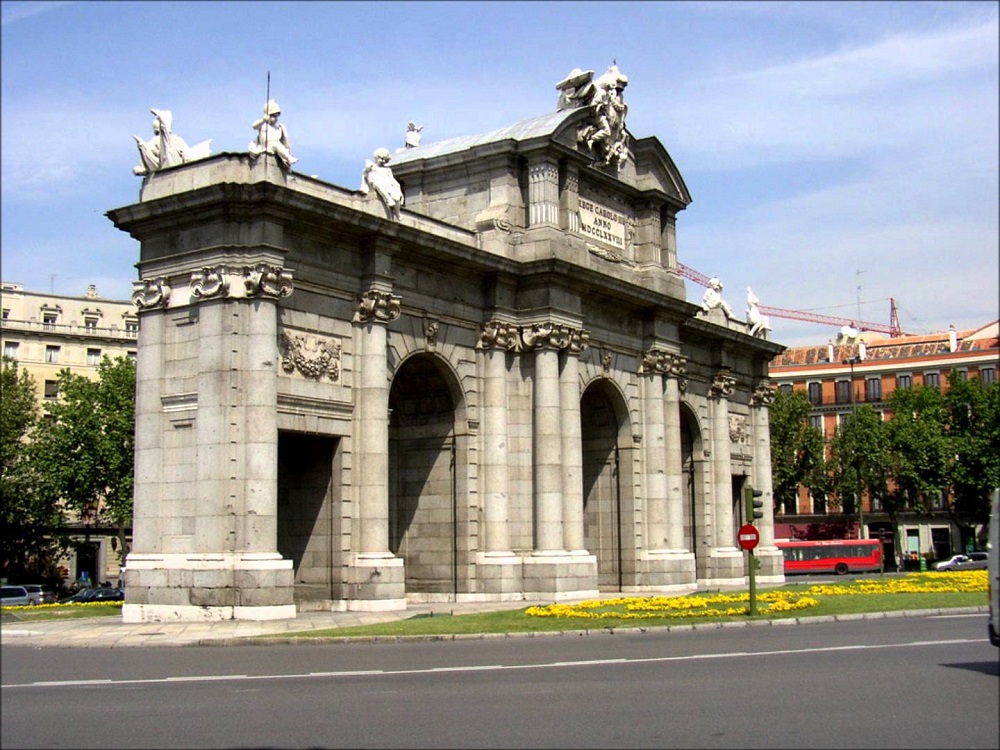
FROM:https://es.wikipedia.org/wiki/Puerta_de_Alcal%C3%A1
FROM:La puerta de Alcalá, la más famosa de Madrid
Don’t you think it’s addictive?
Want to know more about the beauty of architecture?
Come and join our members to explore the beauty of architectural design.
覺得看得不過癮嗎?
想要知道更多建築之美嗎?
快來加入我們的會員,一同探索建築設計之美。
The above article is purely for appreciation and sharing purposes, as well as the construction of new technology and the public can be in-depth understanding of the information at the same time there are sources, will be able to query, no use of the document as a commercial transaction, if illegal, please inform the We will immediately remove the site, thank you for cooperation.
以上文章純粹作為欣賞及分享用途,以及將建築新型技術傳遞給與大眾能夠深入了解,同時資料還有來源,將可查詢,絕無使用該文件資料作為商業交易行為,如有違法請務必告知該網站我們將立即處理撤除,謝謝合作。

